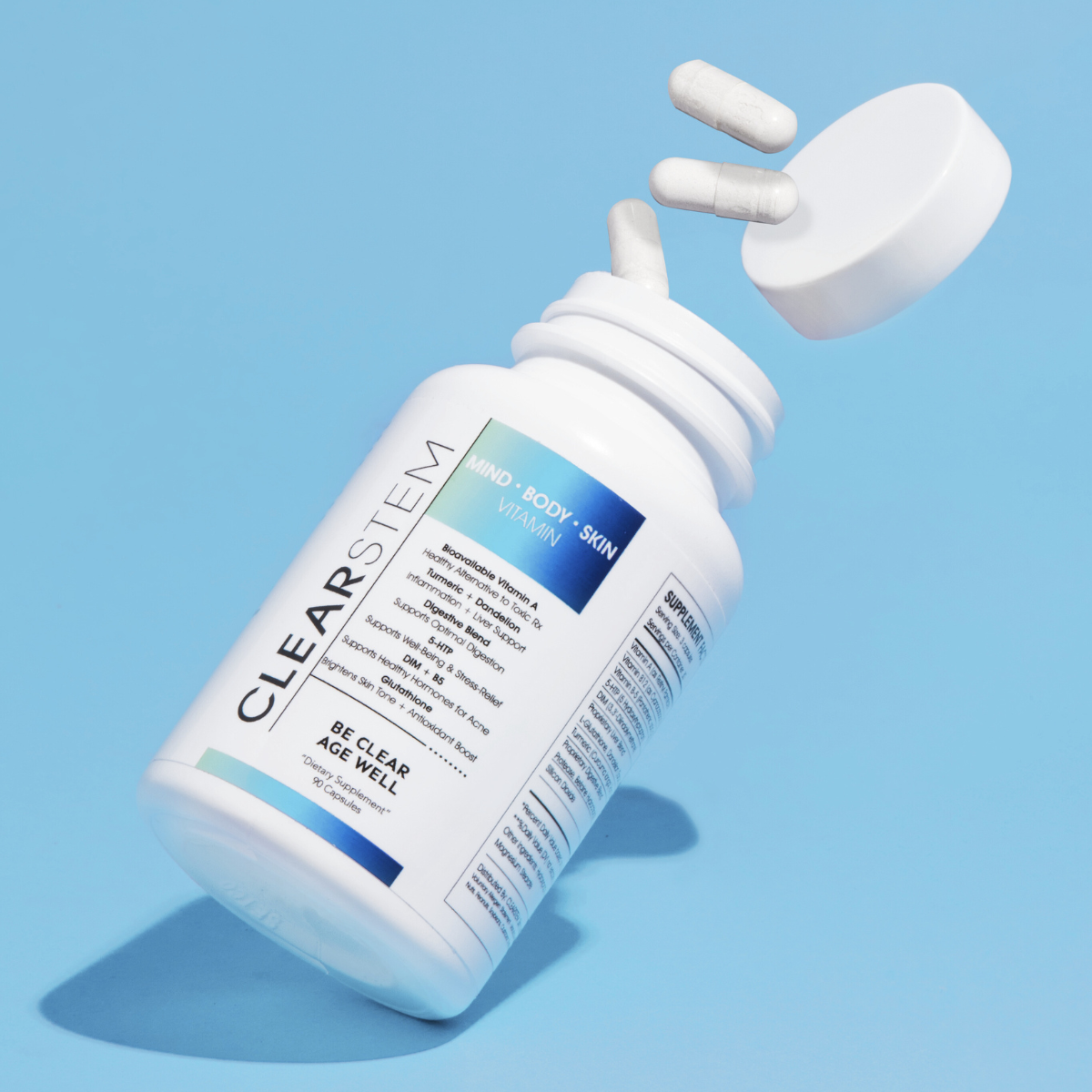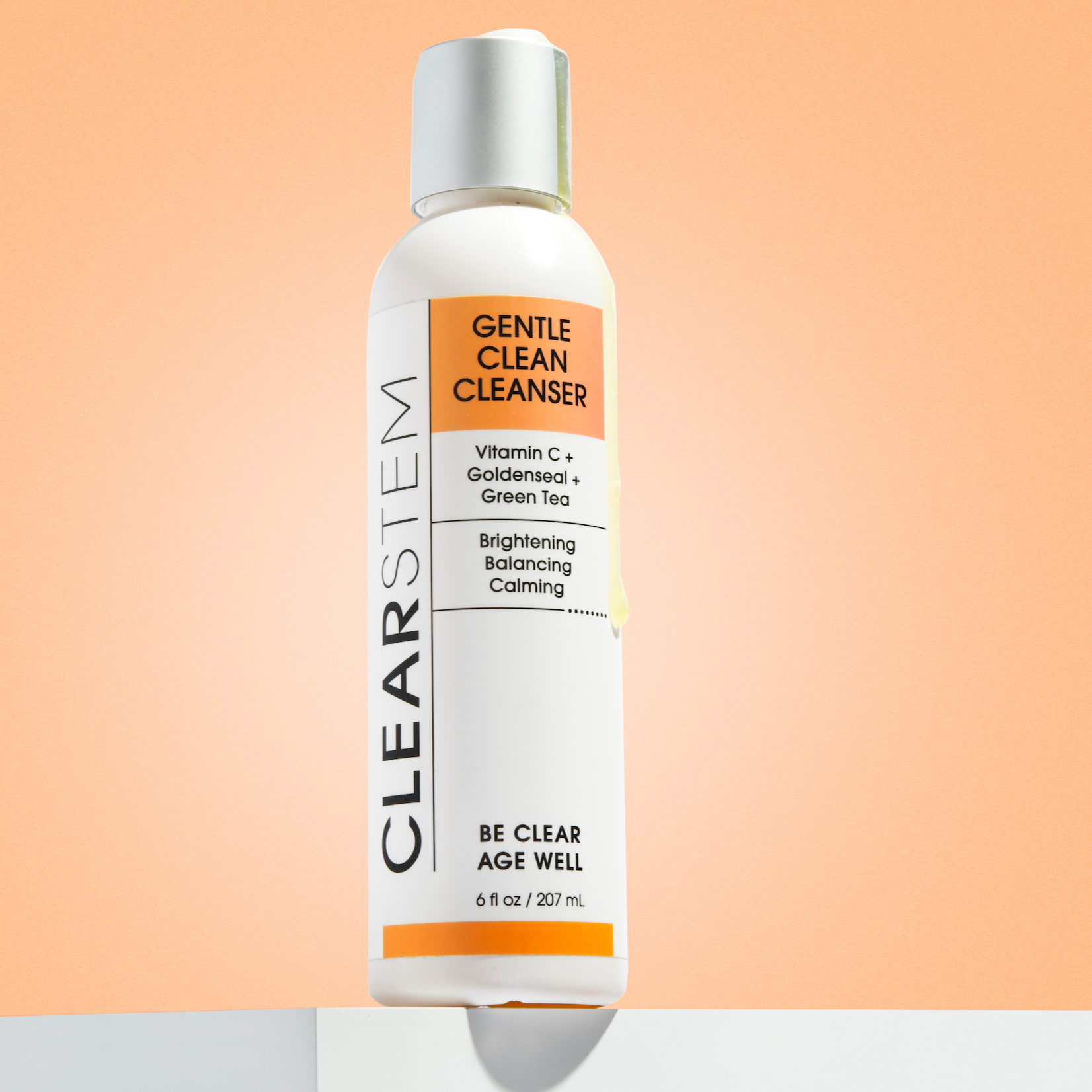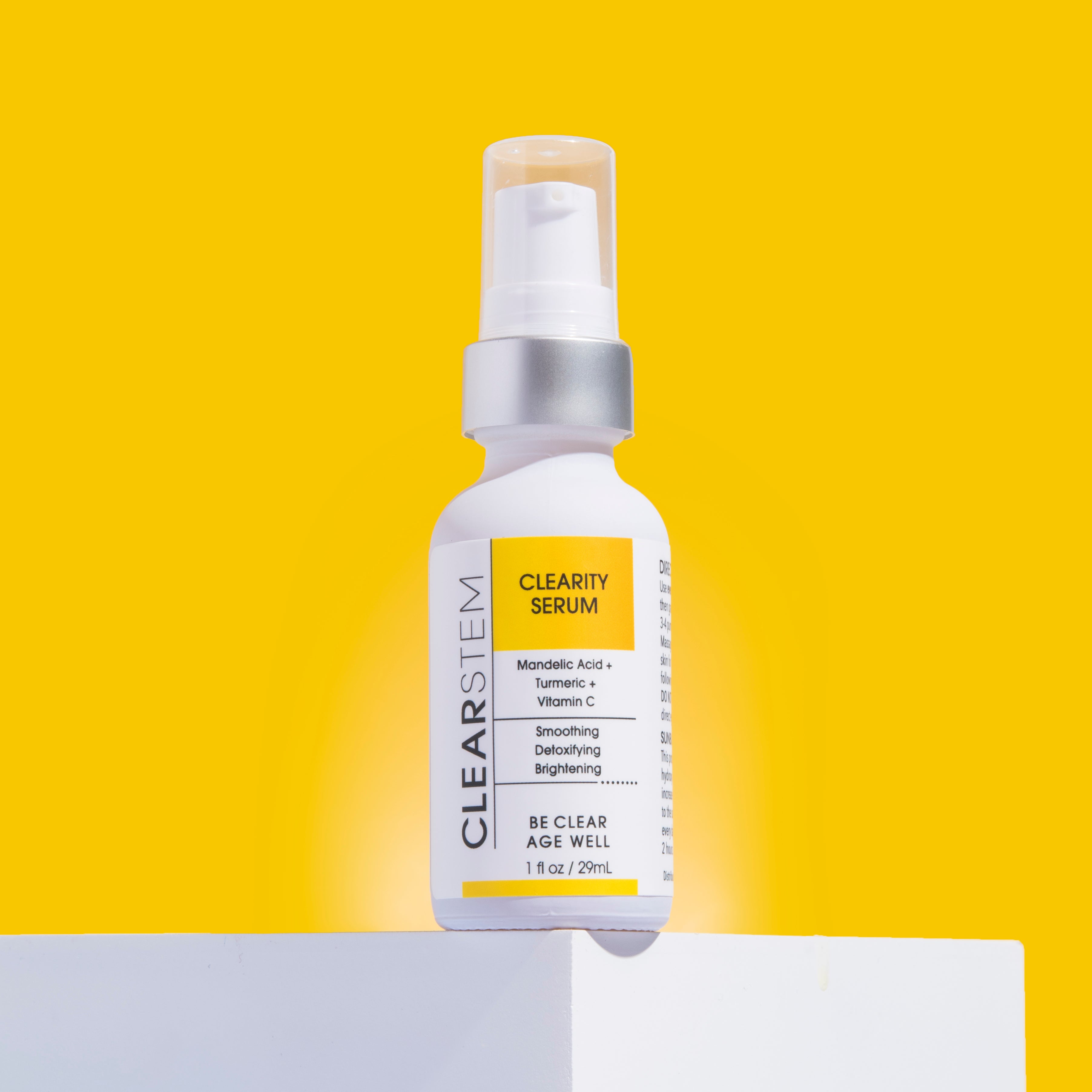When you finally get your own perfect skincare routine down pat, it can almost feel like you’ve won the beauty olympics. You’ve discovered a system that works, the products you use make your skin nice and happy, and you pretty much feel like you have no reason to change it. Right?
Nope! You will still want to know how to adjust your routine like a pro when the weather changes. Or if you go skiing. Or to Vegas. Or to Hawaii. Climate changes absolutely impact your skincare routine and we want to arm you with the working knowledge to cycle like a boss.
While having a rock-solid skincare routine is always a good idea – and we’re super stoked that you found something that does work well for you! – the fact is, when the seasons change, so should your beauty regimen. In other words, what works for your skin in the summer just simply won’t cut it in the winter, and you should learn how to change your skincare routine for winter.
Not only is the harsh winter climate super drying for your skin, but your body actually creates less sebum during this time of the year. This is a recipe for painfully dry, parched, and flaky skin, which can make your skin increasingly acne-prone. If you don’t make those necessary adjustments to your skincare regimen, you could wind up inadvertently hurting your acid mantle. (1)
Now that we’re moving into the cooler months, it’s the perfect time to shake things up with a fail-proof winter skincare routine. No matter what your skin type is (and yes, for those of you with oily skin, we’re also talking to you!), here’s what you need to do to keep it smooth, radiant, and breakout-free during the wintertime.
Winter Skincare Tips
Now that you know why it’s so important to switch up your skincare routine in the winter, your next question is probably somewhere along the lines of, “Okay, awesome. So how do I get started with building a winter skincare routine that works well for my own skin type?”
If you’re looking for the best winter skincare advice, look no further. To help you get started on enjoying soft, supple, and dewy skin all year ‘round, here are seven essential dry skin tips to help you achieve your beauty goals when the days get shorter and the weather gets colder.
"Cycle" Your Exfoliating
It’s tempting to want to reach for the exfoliants when you see those dry patches of skin clinging to your face, but before you pull out a harsh scrub tool, take a step back. Yes, your skin may look like it’s dying to be buffed but over-exfoliation can actually be very detrimental to it.
Instead, we advise that you actually reduce how often you exfoliate in times of dryness. We recommend trying every other day, or about three days per week, to minimize any overly drying effects. And rather than giving your skin a solid scrub-down for twenty or thirty seconds like you normally do, reduce it to about five or ten seconds. It’s about consistency not aggressiveness - TRUST US on this one, beautiful.
It’s also a good idea to switch up the type of exfoliation you do, as well. Physical exfoliation (such as with a gentle scrub or microfiber cloth or dry brush) can help remove those dry patches on your face. Don’t rub too hard, though, as this can lead to broken capillaries and other unwanted skin health issues. Think of what you would do to a baby and then stick to that pressure. Don’t upset the baby.
Chemical exfoliation, though (such as with an alpha hydroxy acid) can really go deep and unclog your pores. Again, though, we definitely need to strongly stress that you don’t want to overdo it. Keep the chemical exfoliation down to just 3-5 times per week –or less! – especially if you’re already doing physical exfoliation. (2)
Don't "Over-Cleanse" in the Morning
Many of us erroneously think that unless our faces are absolutely squeaky clean when we’re done washing them, they’re just not going to be clean enough. However, that mindset is so wrong and so dangerous, on so many levels. The last thing you want to do is completely strip it when it’s already crying out for a little extra hydration.
When you wash your face in the morning, you should aim to keep it simple. Don’t scrub your face, and make sure you’re using the right kind of cleanser, one that won’t overdry your skin. We recommend that you veer away from any cleansers that contain harsh surfactants, too, such as sodium lauryl or laureth sulfate (SLS).
On that note, this brings us to our next tip…
Use a Hydrating Cleanser
When creating your own winter skincare routine, you want to make sure you’re using a hydrating, gentle face cleanser instead of a more drying one. But what exactly is a hydrating cleanser, and what separates one from the other kinds of cleansers out there? Well, it all comes down to the ingredients used in it, that’s what.
First and foremost, we’ve already warned you about being careful about the type of surfactants in your cleanser. Instead, you’ll want a cleanser with a more gentle surfactant in it, such as sodium cocoyl glycinate or cocamidopropyl hydroxysultaine. These can help remove any grime from your face, but without accidentally overdrying it. (3)
You’ll also want to make sure it has essential moisturizing components in it, too. Non-comedogenic oils are always a good bet (such as hemp seed and squalane), as are glycerin and aloe vera. Combined, they can help impart the right amount of moisture into your skin while also gently cleansing it. Additionally, including effective skin barrier repair products in your winter skincare routine can be very beneficial.
Avoid Really Hot Water (“Shower Burn”)
While there’s seriously nothing like a really hot and steamy shower when the temperature outside is plummeting, you should definitely think twice before letting any scalding hot water touch your face. Studies have shown that it can be incredibly drying and remove all of your skin’s sebum, which is a major no-go during the wintertime. (4)
You see, your body’s sebum is actually there to serve a purpose. Sure, your own natural oils can be frustrating sometimes, especially when your skin feels greasy or you’re dealing with clogged pores. However, that sebum helps keep your skin nice and moisturized, which adds an extra element of protection to it. (5)
If you overdry your skin, it can open you up for redness, itching, and even more breakouts. When washing your face, you want to keep the water temperature somewhere between “tepid” and “lukewarm.” Your goal isn’t to melt your face off, but rather, you just want to allow for enough moisture to let the cleanser work its magic on your skin.
Using overly hot heat in the shower can lead to premature aging and make you more susceptible to UV damage, as it destroys your “lipid barrier.” Instead, play it cool in the shower – and don’t linger in there too long, either – and you’ll be able to keep your skin looking youthful and soft instead of painfully dry and cracked leathery. (6 & 7)
Avoid Drying Toners
When it comes to using a toner after washing your face, a lot of people – maybe even yourself included – likely think of those more astringent formulations from the days of yore. You know the ones we’re talking about here, too: they reeked of rubbing alcohol or witch hazel and they burned like the dickens when you applied them to your face.
If that’s your perception of toners, then we’ve got some good news for you here. Today’s toners are nothing like that, and they can actually be very hydrating for your skin. You also have your choice of toners and serums to pick from, and depending on your skin type, it’s easy to find the right fit for yours.
If you’re wondering what types of toners and serums are good options, we have a few recommendations we can offer to you. A collagen serum is a fantastic choice, as it can help restore the structure of your face and keep it looking firm and bouncy. An anti-aging eye cream is also a must-have to dab beneath them to help keep the area around your eyes looking youthful, too.
But that said, what kind of ingredients should you keep an eye out for when looking for a hydrating toner? When choosing one, be sure to look for ingredients like hyaluronic acid and glycerin, as they can help keep any lingering dryness at bay. Just make sure you follow up with a heavy cream afterward, as this can help make sure your skin stays moisturized. (8)
Incorporate a Richer Moisturizer into Your Routine
During the summer months, a lighter moisturizer is probably more than enough for your skin. The extra humidity in the air, combined with your own sebum levels ramped up into overdrive due to the current heat, means that you don’t need much more than a basic moisturizer during this time of the year.
This is much different during the wintertime, though. Because the air is so dry during the winter season, your skin isn’t able to draw as much moisture out of the ambient air to keep it from drying out and getting chapped. This is where a richer moisturizer steps in like our stem cell moisturizer.
Applying a hydrating moisture mask can make all the difference in your skin feeling like the Sahara Desert or a balmy, tropical paradise (except, you know, minus the swaying palm trees). Just be sure to apply it onto damp skin, or right after you apply your serums, to help lock all of that vital moisture into your skin.
Don't Skimp on Sunscreen (Mineral Only!)
It’s a common misconception that you can only get sunburns in the summer, but that couldn’t be further from the truth. The fact is, your skin needs protection from the sun not just in the summertime, but all year long. Using a broad-spectrum SPF is still extremely important in the winter because, even though the temperature outside is dropping, there’s still radiation coming from the glowing orb in the sky all year round.
Even the smallest amounts of this UV radiation can lead to photoaging of your skin. Oh, and if you happen to live somewhere where it snows, then you’ll have to double down on your SPF game. Yes, the winter is an amazing time to do all of your favorite cold-weather sports, but did you know that the sun can bounce off the snow and reflect back into your face? (9 & 10)
This is not unlike a mirror for those nasty UV rays, which means you’ll have to be extra careful if you’re out and about frolicking in a winter wonderland. Be sure to smear about a half teaspoon of mineral sunscreen (or about a finger’s length) onto your face before you head out, and reapply it every two hours. Your skin will thank you for including it in your winter skincare routine! (11)
Takeaway
Your skin is unique, just like you, and this means that it has its own similarly unique needs to keep it feeling its very best. To help maintain it, you’ll need to pay extra special attention to what it’s telling you and make any necessary adjustments to help ensure that it’s healthy throughout the entire year.
The bottom line here is that what works well in the summer just isn’t going to fly during the harsher winter months. Because of this, tinkering with your beauty routine is of the utmost importance. Turn your focus onto hydration and steer clear of anything that can dry you out, and before you know it, your skin will be back to its good ol’ self before too long.
It’s no secret that the wintertime can be so incredibly breathtaking, with the glistening snow and holiday cheer, and it’s undoubtedly one of the most beautiful times of the year. By making your skincare a priority during these frigid months, you can also be part of that natural beauty – and even if the weather outside is frightful, you’ll still be able to let it glow, let it glow, let it glow.
Sources
Source 1: Evaluation of Seasonal Changes in Facial Skin With and Without Acne https://pubmed.ncbi.nlm.nih.gov/26091385/
Source 2: Hydroxy Acids, the Most Widely Used Anti-aging Agents https://www.ncbi.nlm.nih.gov/pmc/articles/PMC3941867/
Source 3: A Novel Glycinate-based Body Wash https://www.ncbi.nlm.nih.gov/pmc/articles/PMC3718747/
Source 4: Impact of Water Exposure and Temperature Changes on Skin Barrier Function https://www.ncbi.nlm.nih.gov/pmc/articles/PMC8778033/
Source 5: Sebaceous gland lipids https://www.ncbi.nlm.nih.gov/pmc/articles/PMC2835893/
Source 6: Impact of Water Exposure and Temperature Changes on Skin Barrier Function https://pubmed.ncbi.nlm.nih.gov/35053992/
Source 7: Understanding the Epidermal Barrier in Healthy and Compromised Skin: Clinically Relevant Information for the Dermatology Practitioner https://www.ncbi.nlm.nih.gov/pmc/articles/PMC5608132/
Source 8: The 24-hour skin hydration and barrier function effects of a hyaluronic 1%, glycerin 5%, and Centella asiatica stem cells extract moisturizing fluid: an intra-subject, randomized, assessor-blinded study https://www.ncbi.nlm.nih.gov/pmc/articles/PMC5560567/
Source 9: Sun and Skin https://newsinhealth.nih.gov/2014/07/sun-skin
Source 10: Environmental Cues to Ultraviolet Radiation and Personal Sun Protection In Outdoor Winter Recreation https://www.ncbi.nlm.nih.gov/pmc/articles/PMC3364536/
Source 11: Simple dosage guide for suncreams will help users https://www.ncbi.nlm.nih.gov/pmc/articles/PMC1123459/









